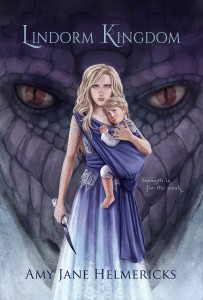I currently have the first regular writing schedule since I began ~10 years ago. The first three hours my kids are gone, I sit down and work on Lindorm Queen.
It helps by having a straight focus (makes it easier to ignore non-novel distractions when I know I’ve just got these three hours — but I do have them, and that creates something of a positive motivation loop…) But that’s not the hard part.
The hard part is looking at a story that seems as though it was written by another person (I started it so long ago), knowing it was me that put all that together, and then remembering to treat me as gently as I’d treat any other fresh novelist who has a lovely story with lots of weak parts.
Sometimes it’s easier to be nicer to other people.
Yesterday I clocked myself (a trick I started NaNo ’13 when I could only write in little chunks) and for raw output I maintained a steady 1100/hour, which satisfies me. Today I went to work, and hit with a familiar problem, I rewound and looked at basics, and saw (perhaps again) the behemoth I’m taking on in changing the story’s main character.
The good news: story’s getting way stronger.
Bad news, that just highlights how weak it was.
You see, the story itself isn’t weak so much as the characters.
Celia and Torbilan, while unique and interesting in LK, were never (in my mind) built all the way up to major-character status. They existed as foils– contrast, backdrop, opportunities to highlight– the main couple of Asmund and Linnea. C & T were (on-purpose) relatively passive in order to give the other characters more opportunities to be active (a technique I don’t think I’ll repeat, but it got that first story told).
Now I have to find a way to work up the goals and motivations of these two very. quiet. individuals so they have enough energy and drive to be the impetus of their own story.
I spent a lot of my work time today on TVtropes.org, working through articles and examples such as Obfuscating Stupidity, The Coward, Guile Hero, Master of Disguise, and so on. Torbilan has such a deep hope and idealism in the face of everything that he frequently can look foolish or a little stupid (when he’s not), and that might have to go by the wayside, but I’m hoping that this aspect of his will play well with Celia’s super-practical survivor-cynicism.
My play with opposites is less about “opposites attract” than “filling the gaps.” The similarities have to be there for the initial pairing or the gaps won’t get filled anyway.
What shifting the main characters has also done is made the B-line of the story (a kidnapping) more significant. In the original, it was just a tool to get the men off being heroes so the folks back home were stuck solving the Big Story Problem, but since the B-plot is now about LK‘s main character (not a spoiler– it’ll be part of the book blurb), I have more history and an established character to play with, so the options have expanded.
It’s been a long time since I had to dig down and build characters from the skeleton out, but it’s a tiny bit exhilarating, too.
And it’s a reminder that research is part of the writing, even when I don’t know exactly where it will all be used.











